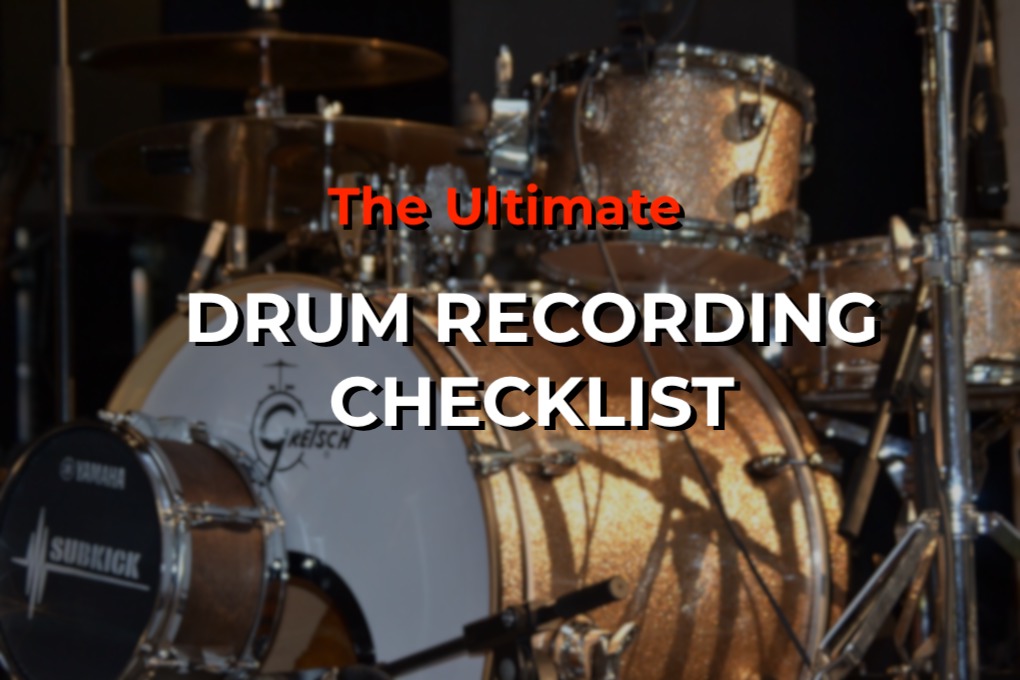- in Production by Bobby Owsinski
The Ultimate Drum Recording Checklist

Like the foundation of a house, the drums are the foundation of a recording. With a strong foundation, you can build almost anything on it that you or your clients can imagine. A little effort and time spent miking the drums and getting the sound just right can result in a recording that sounds better than you would have ever imagined. That said, here’s a drum recording checklist to go over if something just doesn’t sound right.
Remember that each situation is different and ultimately the sound depends upon the drums, the drummer, the room, the song, the arrangement, the signal chain, and even the other players. It’s not unusual to have at least one of these things out of your control.
☐ Are the mics acoustically in phase? Make sure that tom mics and room mics are parallel to each other. Make sure that any underneath mics are at a 45° angle to the top mics.
☐ Are the mics electronically in phase? Make sure that any bottom mics have the phase reversed. Make sure that all the mic cables are wired the same by doing a phase check.
☐ Are the mics at the correct distance from the drum? If they’re too far away they’ll pick up too much of the other drums. If they’re too close the sound will be unbalanced with too much attack or ring.
☐ Are the drum mics pointing at the center of the head? Pointing at the center of the drum will give you the best balance of attack and fullness.
☐ Are the cymbal mics pointed twoards the bell. If the mic is pointed at the edge of the cymbal, you might hear more air “swishing” than cymbal tone.
☐ Is the high-hat mic pointed at the middle of the hat? Too much towards the bell will make the sound thicker and duller. Too much towards the edge will make the sound thinner and pick up more air noise.
☐ Are the room mics parallel? If you’re using two room mics instead of a stereo mic to mic the room, make sure that the mics are on the same plane and are exactly parallel to each other. Also make sure that they’re on the very edge of the kit looking at the outside edge of the cymbals. There are many other ways to set up room mics, but this is a great place to start.
☐ Does the balance of the mix sound the same as when you’re standing in front of the drums? This is your reference point and what you should be trying to match. You can embellish the sound after you’ve achieved this.
☐ Have you checked the drummer’s headphones? The cue mix is critical for a drummer, so make sure the headphones are in good working order with at least a basic mix balance. You’ll undoubtedly tweak it later.
☐ Is the right click set up? Most drummers are okay playing to a click these days, so make sure that it’s in the headphones and cuts through the mix. Be sure to ask what kind of sound or loop the drummer likes.
Remember, take risks, experiment, take notes on what works and what doesn’t, be creative, and most of all, have fun! This items on this drum recording checklist are not hard and fast rules, just a starting place. If you try something that’s different from what you’ve read and it sounds good, it is good!
You can read more from The Recording Engineer’s Handbook and my other books on the excerpt section of bobbyowsinski.com.

